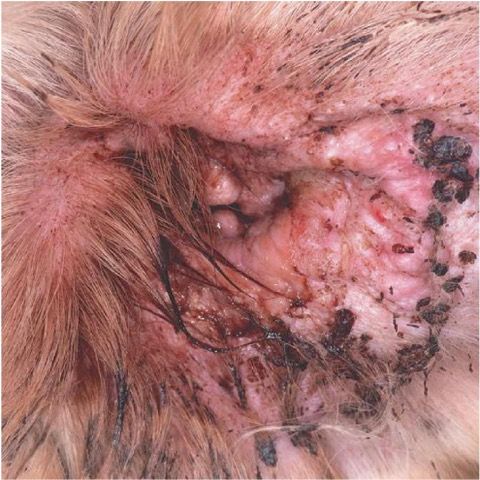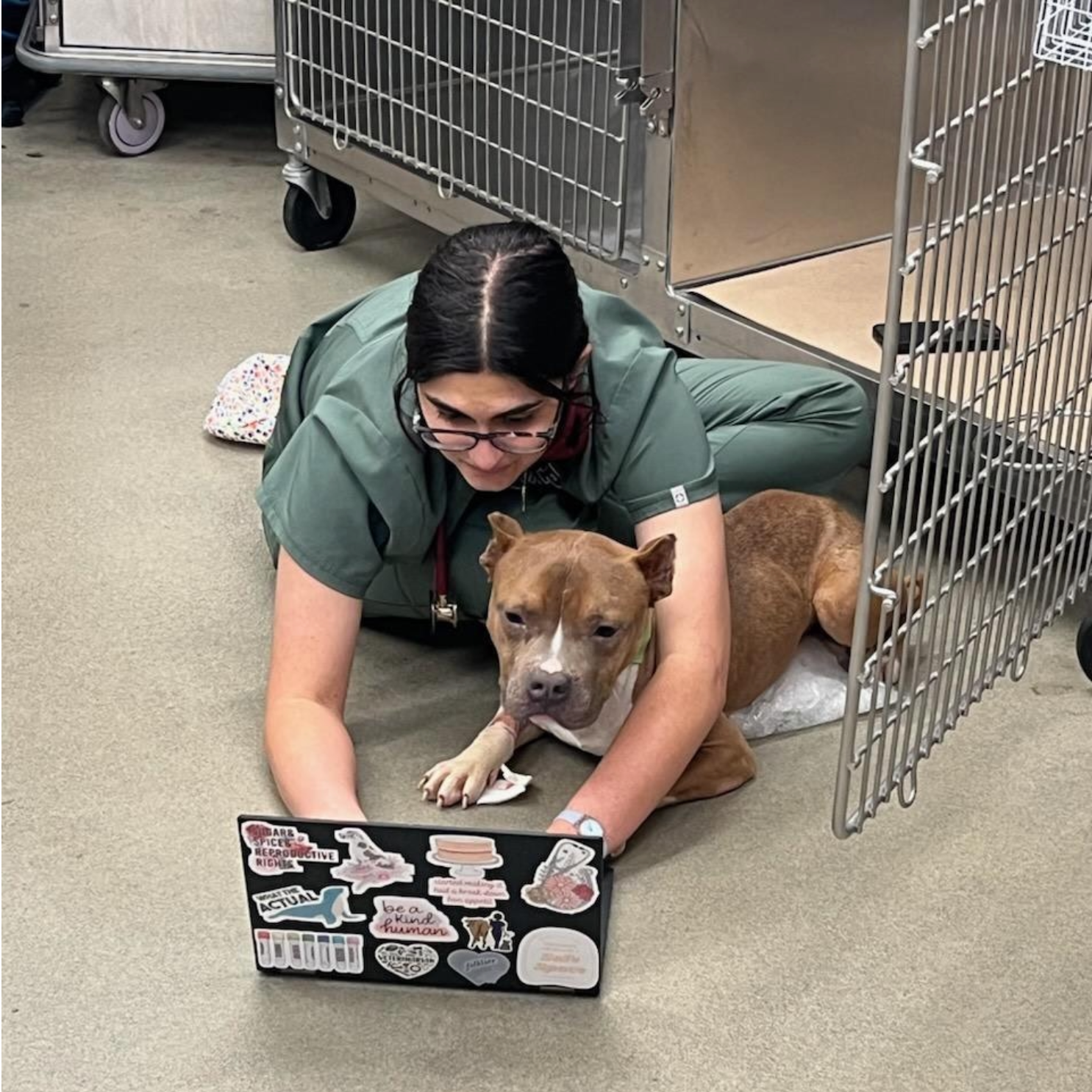Ear Infections in Dogs

Ear infections are a common health issue in dogs, causing discomfort and potentially serious complications if left untreated.
What causes ear infections in dogs?
Also known as otitis externa, ear infections can affect dogs of all breeds, sizes and ages. A healthy ear should be clean, dry and odorless. Regular ear care is the best way to prevent infections and keep the ear healthy at all times.
Here are a few issues that might result in an ear infection for your dog:
- Allergies: Environmental and food allergies can cause inflammation and excess wax production in the ear canal, which can lead to secondary infections.
- Moisture: Excess moisture from swimming or bathing can create an ideal environment for bacterial and yeast growth. This is more commonly an issue with contaminated water sources, like lakes, or if the ear was already inflamed beforehand.
- Foreign bodies: Foreign bodies like grass seeds can become lodged in your dog’s ear canal, causing irritation and infection.
- Ear mites: These parasites cause intense itching and inflammation in dogs’ ears, usually leading to an infection.
- Underlying health issues: Conditions like hypothyroidism or autoimmune disorders can predispose some dogs to ear infections.
- Narrow ear canals: Dogs that have anatomically very narrow ear canals (eg.: sharpei), very hairy ears, or that have polyps or tumors in their ears, or chronic ear infections in the past makes the ears more narrow, humid and prone to infection.
- Dangling ear flaps: Flappy ears in certain breeds (eg.: Bassett Hounds, Spaniels, Golden retrievers) cover the entrance to the ear canals so that air cannot flow freely into the ear, again making the ear canals more humid and prone to infection.
What are the signs of an ear infection in dogs?
- Head shaking or tilting
- Constant scratching at the ears
- Redness or swelling in the ear canal
- Discharge or a foul smell
- Pain or sensitivity when touching the ears
- Hearing loss or balance issues.
Signs of ear infections in dogs can vary depending on the type of infection (e.g., bacterial, yeast, etc.), degree of inflammation and location (whether it is just the external ear canal or if it is affecting the middle ear).
Different types of ear infections:
- Outer ear infections (otitis externa): These infections mostly happen in the ear canal and are the most common type of ear infection in dogs.
- Middle ear infections (otitis media): These occur when an outer ear infection spreads deeper inside, beyond the ear drum, which can lead to more serious complications.
- Inner ear infections (otitis interna): This occurs when the innermost part of the ear and its internal structures become affected, tending to impact balance and hearing.
How to treat a dog’s ear infection:
- Ear cleaning: Thoroughly clean the ear canal to remove gunk and discharge.
- Medications: In acute ear infections, ear drops containing various combinations of steroid, antibiotic, antiparasitic and/or antifungal agents are often used. Sometimes, steroid injections and oral medications including antibiotics or antifungals can be required.
- Address the underlying causes: Manage any underlying conditions, like allergies, to prevent recurring issues. In some cases, long term use of ear drops to remove wax or to control inflammation may be necessary.
- Surgical treatment: If the ear is beyond medical management and there are permanent structural changes or chronic pain, surgery may be used to salvage the situation. For chronically painful ears surgery to remove the whole of the ear canal can provide relief.
How to clean your dog’s ears safely
Regular ear cleaning is a key step in avoiding infections. Here’s a simple six-step guide to safely clean your dog’s ears:
- Use a veterinarian-recommended ear cleaner, cotton pads or tissue and a towel.
- Have your dog sit or lie down comfortably.
- Gently lift the ear flap and use the ear cleaner according to the directions.
- Gently massage the base of the ear to distribute the cleaner and loosen any build-up.
- Use a cotton pad or tissue to wipe anything that might remain. Don’t use cotton swabs/buds, as these can push build-up further into the ear canal.
- Give your pet treats as a positive reinforcement.
Regular cleaning will help reduce build-up and moisture, which will, in turn, lower the risk of infection.
When to see us for ear problems?
It’s best to seek advice if you notice any ongoing signs, discomfort, or if your dog seems to be getting recurring ear infections. As always, early intervention can help prevent complications and ensure your dog is happy and healthy.
By staying vigilant and regularly caring for your dog’s ears, you can help keep them healthy and avoid nasty infections.


